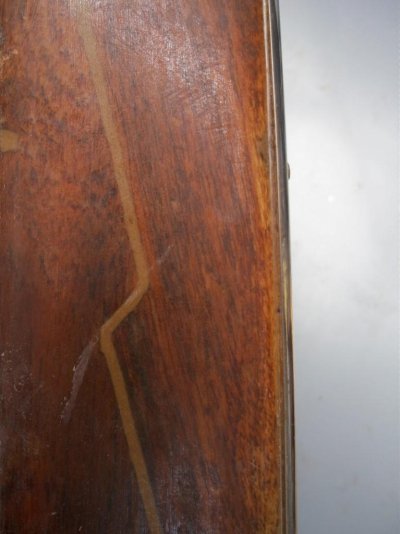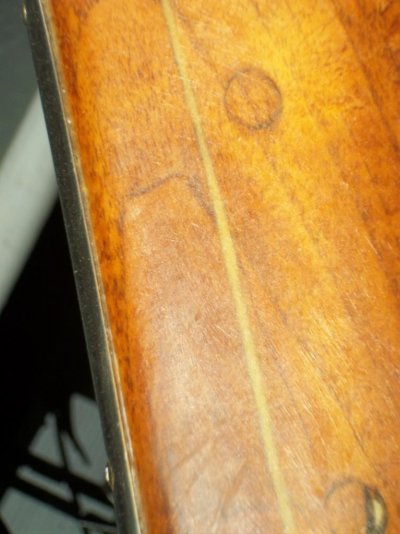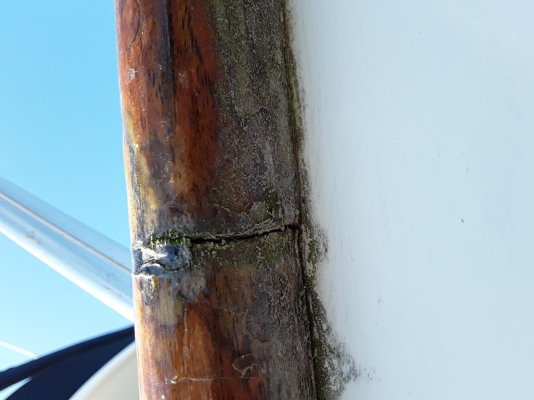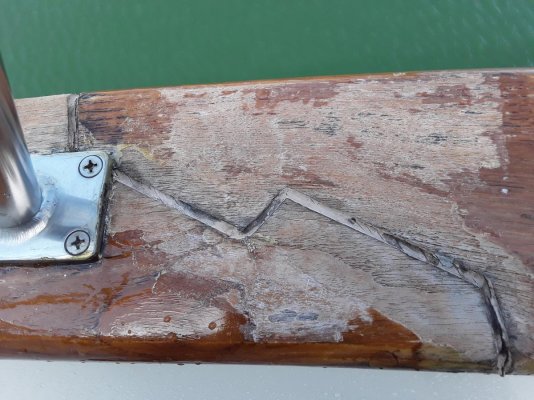rlrrlrll
Newbie
Hello. I have a 34' trawler with bright work. There is a cap rail that runs all the way around the boat. I stripped and sanded it down years ago and varnished it. Each year I patch problem spots and put 3-5 coats on. It is not covered.
There are a few places that fail every year. They are at the seams where it appears to be two pieces of teak spliced together with some black stuff in between. Every year water gets in and the varnish fails.

Really though, these are not seams but small grooves cut in the wood with the black stuff in the grooves.
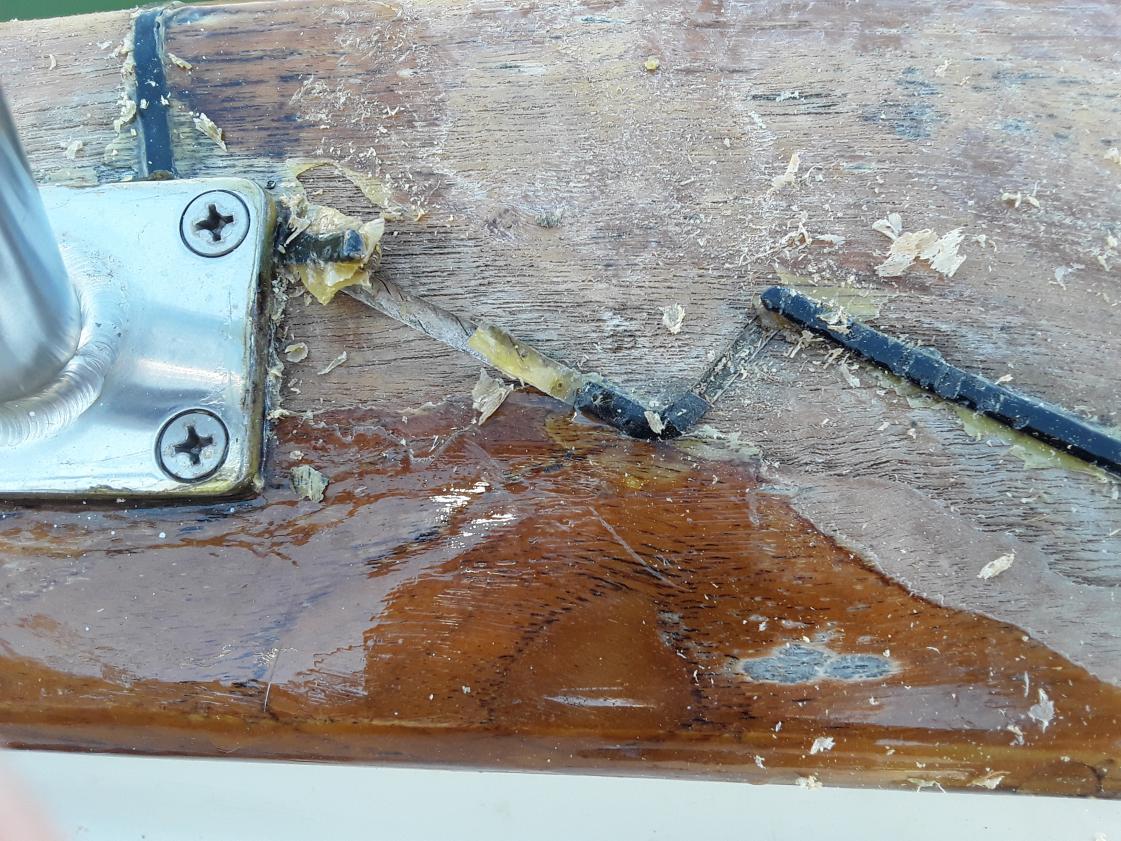
Why they did this I have NO idea. But they did.
What would be a good way to seal this area so it doesn't fail every year? I did have the black stuff replaced once but it still failed.
I'm tempted to just remove the black stuff and sand the grooves and just varnish over it.
Do any of yall have an idea on either what to use to fill in the seams that won't get water under it, or some way I could possibly put something over these spots to seal them?
Thanks for viewing.
There are a few places that fail every year. They are at the seams where it appears to be two pieces of teak spliced together with some black stuff in between. Every year water gets in and the varnish fails.
Really though, these are not seams but small grooves cut in the wood with the black stuff in the grooves.
Why they did this I have NO idea. But they did.
What would be a good way to seal this area so it doesn't fail every year? I did have the black stuff replaced once but it still failed.
I'm tempted to just remove the black stuff and sand the grooves and just varnish over it.
Do any of yall have an idea on either what to use to fill in the seams that won't get water under it, or some way I could possibly put something over these spots to seal them?
Thanks for viewing.

![20200705_142624[1].jpg](/data/attachments/94/94296-175eeab24d00b0221517444ca9521e87.jpg)
![20200705_143253[1].jpg](/data/attachments/94/94297-f3708391925ca4c7e08e50c8c434a30b.jpg)
